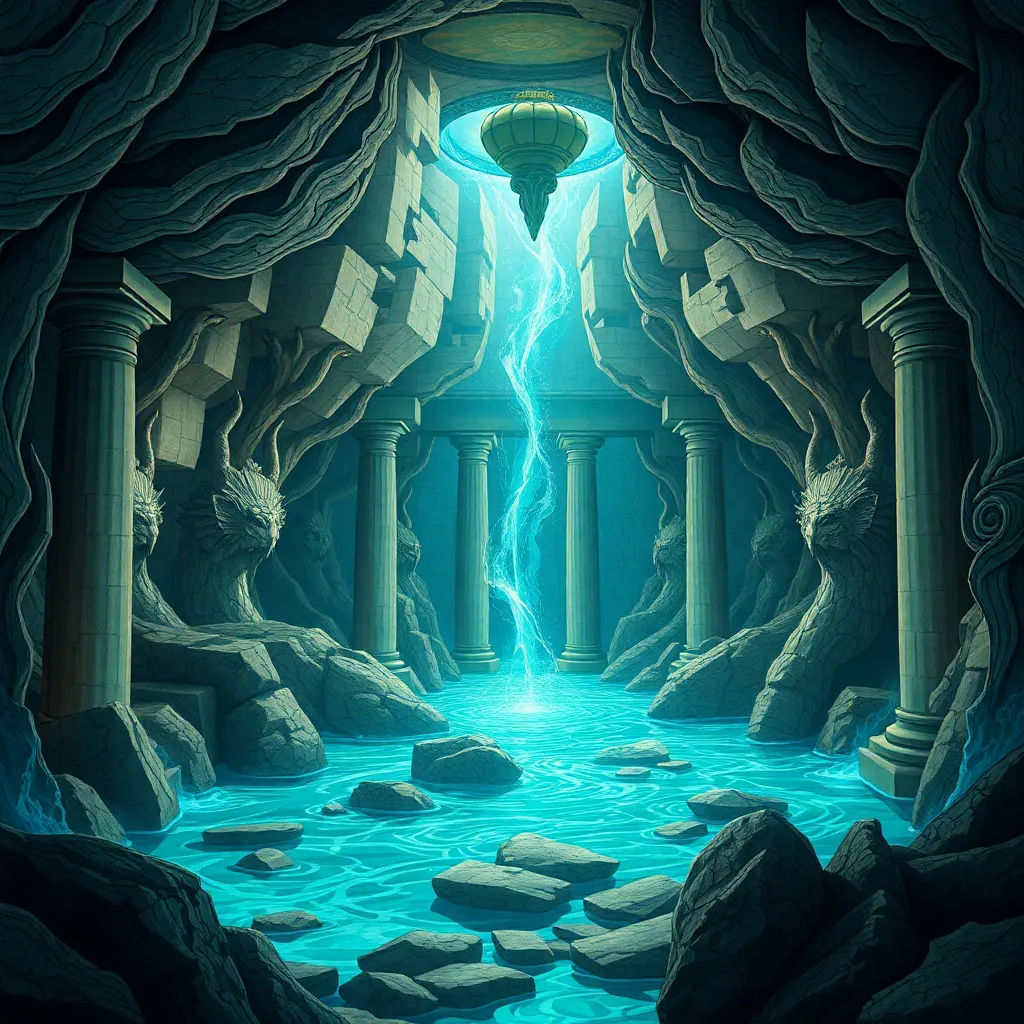The Underworld in Greek Mythology: A Source of Inspiration for Artists
I. Introduction
The Underworld in Greek mythology, known as Hades, represents the realm of the dead, a place where souls go after death. It is not merely a pit of despair; rather, it embodies a complex structure filled with various regions and figures that contribute to its rich narrative. The Underworld holds profound significance in ancient Greek culture, influencing their beliefs about life, death, and the afterlife.
This article aims to explore the Underworld’s impact on artists throughout history, delving into its representations across various mediums, from ancient pottery to contemporary art. By analyzing these influences, we can better understand how this mythical realm continues to inspire creativity today.
II. The Mythological Framework of the Underworld
Central to the Underworld’s mythology are several key figures:
- Hades: The god who rules the Underworld and presides over the souls of the deceased.
- Persephone: The daughter of Demeter, who becomes the queen of the Underworld after her abduction by Hades.
- Charon: The ferryman who transports souls across the river Styx to the realm of the dead.
- Cerberus: The three-headed dog who guards the gates of the Underworld, preventing the escape of souls.
The Underworld is structured into distinct regions, each serving a different purpose:
- Elysium: A paradise for the souls of the virtuous and heroic, where they enjoy eternal happiness.
- Tartarus: A dark abyss reserved for the punishment of the wicked, where they face eternal torment.
- Asphodel: A neutral area where ordinary souls reside, neither rewarded nor punished.
The myths surrounding the Underworld often explore profound themes of death, rebirth, and morality, reflecting the ancient Greeks’ understanding of human existence and the afterlife.
III. The Underworld in Ancient Art
In ancient Greek art, the Underworld was a prevalent theme depicted in pottery, sculpture, and frescoes. Artists often illustrated scenes from mythological tales, capturing the essence of this mysterious realm.
Notable works include:
- The “Psyche and Eros” vase, depicting the journey of Psyche to Hades.
- The “Orpheus and Eurydice” relief, showcasing Orpheus’s descent into the Underworld to retrieve his beloved.
These artworks not only serve aesthetic purposes but also reflect the beliefs and rituals associated with death and the afterlife in ancient Greek society. The Underworld was integral to their understanding of life, influencing funerary practices and the way they commemorated the deceased.
IV. The Underworld in Literature and Poetry
Literature, particularly epic poetry, has been profoundly influenced by the concept of the Underworld. In Homer’s “Odyssey,” Odysseus ventures into Hades to seek guidance from the prophet Tiresias, highlighting the Underworld’s role in the hero’s journey. Similarly, Virgil’s “Aeneid” portrays Aeneas’s descent into the Underworld, where he learns about his destiny and the future of Rome.
Playwrights such as Euripides and Aeschylus also drew inspiration from the Underworld, incorporating its themes into their tragedies. The Underworld serves as a backdrop for exploring existential questions, human morality, and the consequences of one’s actions.
Symbolism in these literary works often reflects the duality of life and death, love and loss, providing deeper insights into the human condition.
V. Renaissance and Baroque Interpretations
The Renaissance marked a revival of classical themes, including those from Greek mythology. Artists sought to reconnect with the ancient past, leading to renewed interest in the Underworld’s rich narratives.
Famous artists such as:
- Michelangelo: His frescoes in the Sistine Chapel depict dramatic scenes of the Last Judgment, echoing themes of the Underworld.
- Botticelli: In “The Birth of Venus,” elements of mythological transformation resonate with the idea of rebirth associated with the Underworld.
- Caravaggio: His works often explore chiaroscuro, symbolizing the light and darkness found in the Underworld.
These artists created key works that connect to the Underworld, illustrating its themes of morality, redemption, and the afterlife through their unique interpretations.
VI. The Underworld in Modern Art
In the 20th and 21st centuries, the Underworld continues to inspire contemporary artists. Figures like Salvador Dalí and Frida Kahlo have drawn upon its symbolism to explore psychological and emotional depths.
The influence of the Underworld extends beyond visual arts into literature and film, where it serves as a motif for existential exploration. Works such as:
- “The Lovely Bones” by Alice Sebold
- “What Dreams May Come,” a film exploring the afterlife
exemplify how the Underworld’s themes resonate in modern narratives, addressing human fears and desires regarding death and the afterlife.
VII. The Psychological and Philosophical Aspects
The Underworld can be seen as a powerful metaphor for the subconscious, representing the hidden aspects of the human psyche. Artists often use this realm to delve into existential themes, exploring the nature of existence, identity, and mortality.
By confronting the Underworld, artists address contemporary issues such as:
- Fear of death and the unknown
- The struggle for meaning in a chaotic world
- The impact of trauma and loss on the human experience
Through their works, artists invite viewers to reflect on their own experiences and the broader human condition.
VIII. Conclusion
The Underworld in Greek mythology has profoundly impacted artists across history, serving as a wellspring of inspiration in various forms of creative expression. From ancient pottery to modern literature and visual arts, the themes of death, rebirth, and morality continue to resonate.
The enduring legacy of Greek mythology in the arts highlights the universal questions that humanity grapples with, ensuring that the Underworld remains a relevant and powerful symbol in today’s creative landscape. As artists explore the depths of the human experience, the Underworld will continue to inspire and provoke thought across generations.




